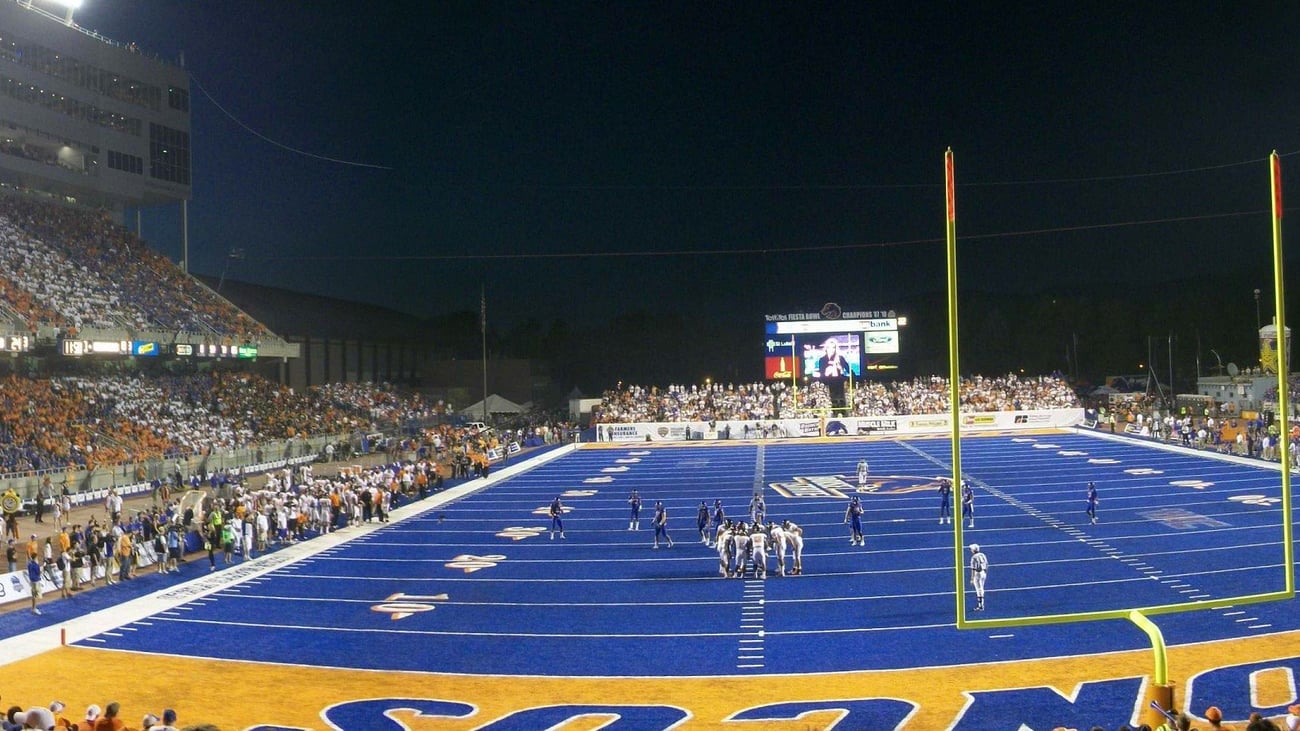
Rogers Centre
Toronto, Canada
A lot of stadiums have retractable roofs. But this stadium – opened in 1989 – was the first to have a motorised retractable roof. It also has its own hotel. Inside the stadium. While this has led to a few naughty moments during Toronto Blue Jays Major League Baseball (MLB) games, it has also helped reduce the demand for parking space immediately around the stadium, not to mention reduce travelling times between where spectators might be staying and the venue – which, of course, cuts back on emissions. If all that’s not enough, the stadium also has blocks of seating that rotate, meaning it can be quickly reconfigured for different types of sports or events (like baseball to soccer).

EverBank Field
Jacksonville, Florida
Home to the Jacksonville Jaguars NFL team, this outdoor stadium has an actual swimming pool built into its upper levels – which people can use during events. It’s probably a good thing Florida is warm for most of the year.
Bonus: other stadiums in the US also have pools. Thankfully they, too, are in warm places.
Ericsson Globe
Stockholm, Sweden
It’s the largest hemispherical building on earth; in other words, it’s a giant dome. Opened in 1989, it’s hosted sporting events, concerts, conferences and trade shows, the finals of the iconic Eurovision Song Contest, and even a mass led by Pope Saint John Paul II. While some critics have slammed the design as looking like an enormous golf ball, others have praised its bold design, which has helped it become known as one of the most unique buildings in Scandinavia.

Albertsons Stadium
Boise, Idaho
The grass here is blue. Repeat: the grass is blue.
Granted, it isn’t real (it’s artificial turf), but it looks and feels like the real thing. The bold colour choice – which was first installed in 1986 – has helped Boise State University (who own the stadium, which is located at the east end of campus) grow from a small school that was relatively obscure outside the sparsely-populated state of Idaho into one of the best-known universities in the United States; in fact, the blue field is the first thing many people think of when they think of Boise State.
Although the “Smurf Turf” has had its share of controversies (for a time, Boise State’s American football team was forbidden from wearing blue uniforms when playing on the surface, for fear players would “blend in” and gain an unfair advantage over opponents; there’s also the urban legend that flocks of geese and other birds occasionally crash into the field, thinking it’s a body of water), it’s proof that a unique design feature can help build an identity and gain recognition. It can also lead to economic benefits: because of the uniqueness of the design, Boise State gained a patent for all non-green athletics fields in the United States – meaning other schools and organisations planning to install non-green fields must pay for permission to do so.

For the millionth time, it’s not a lake, dude pic.twitter.com/vcA19kNsec
— Boise State Football (@BroncoSportsFB) May 2, 2016
Beijing National Aquatics Centre
Beijing, China
Sydney-based firm PTW Architects won an online vote to build the aquatics centre for the 2008 Summer Olympics – which, of course, was the site of American swimmer Michael Phelps’ record-breaking eight gold medal haul. Also called “The Water Cube,” the box-like design is also well-known for the 22,000 steel beams arranged to look like bubbles on the outside of the stadium, and the UV-resistant ETFE plastic that makes up the walls. These can light up in different colours at night – creating a stunning effect somewhat akin to the Vector Lights on the Auckland Harbour Bridge.

AT&T Stadium
Dallas, Texas
This cathedral to American excess is utterly ginormous – it can seat more than 100,000 people. Although criticised for such things as poor access to public transportation, the stadium (which also has a retractable roof) has a number of design features that makes such a massive capacity possible, including one of the largest video boards in the world, which measures a monstrous 53 metres across. In other words, no matter where someone is sitting, it’s not hard to get a good picture of the action.

Superior Dome
Marquette, Michigan
This domed stadium is made from wood – and is the largest wood-domed stadium on earth. The dome is only 44 metres high and 163 metres across (relatively small by stadium standards), but its mere existence is proof that wood can be used in innovative stadium construction. The downside, of course: a lot of trees had to be cut down to build it.





